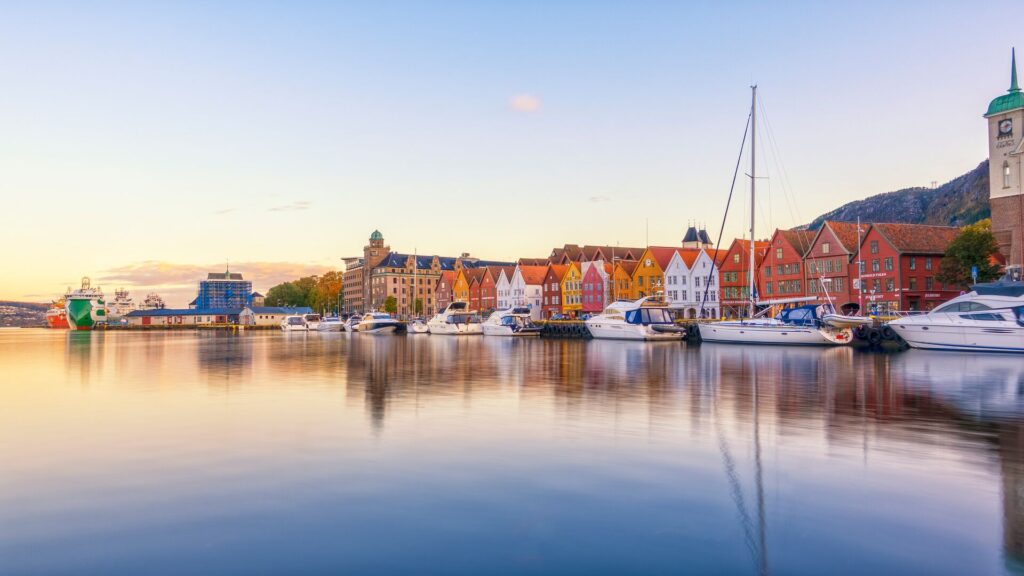Tourist Attractiveness: The Travel Industry Term to Learn in 2025
Travel is an ever-evolving industry, with an ever-expanding glossary of terms. We have already seen a number of new trends emerge in 2025 – from slow travel to JOMO. Another travel term that has flashed up on our radar in recent months is ‘tourist attractiveness’. And before you get the wrong idea, it has nothing to do with the attractiveness of a given destinations visitors. Let us explain further…

What is Tourist Attractiveness?
‘Tourist attractiveness’ describes the way in which the travel industry measures how much tourists want to go to different destinations. Encapsulating the overall appeal of a country, city or attraction, it factors in everything from culture, uniqueness, value for money and accessibility. Learn about this term to make more fulfilling travel decisions, thinking clearly about where you want to go, and why.
Think of tourist attractiveness as a measure of how to choose where to go next, based on simple factors which make up how appealing a destination is to travelers. It goes beyond simple lists of the top attractions in the world and considers deeper factors that shape a destination’s overall desirability. It evaluates elements like authenticity, infrastructure, and environmental responsibility to determine why some places stand out as the top tourist spots in the world, while others have relatively low footfall. When thinking about where you’d like to go next, you can consider the factors that make a destination popular, and use that to help inform whether that’s what you value too.
Key factors that contribute to a location’s tourist attractiveness include:
- Cultural richness – How unique and immersive is the destination?
- Safety and accessibility – Is the destination suitable for different types of travelers?
- Value for money – How far does a tourist’s budget stretch?
- Sustainability efforts – Is the tourism industry operating responsibly?
Key elements of Tourist Attractiveness in 2025
A number of evolving factors shape the most popular tourist places in the world in 2025, and in years past:
1. Cultural Authenticity
More travelers seek deep, immersive experiences rather than just visiting landmarks. A country’s ability to preserve and showcase its traditions, cuisine, and lifestyle makes it stand out. Destinations that maintain their historical sites, traditional practices, and indigenous customs are particularly appealing.
Is the historical legacy of the country well-preserved? Does it have a rich arts scene that you can engage with? Are local markets, food tours, and cultural festivals accessible to visitors? Destinations that foster storytelling and hands-on cultural interactions tend to attract more tourists.

One new travel trend of the past few years is ‘Coolcationing’: traveling to milder destinations to escape from the heat.
2. Safety and Accessibility
Safety remains a priority, though this depends on who you are, and how you’re traveling. Some locations may be incredibly safe for families and couples, but less so for solo female travelers. Accessibility also includes ease of transportation, visa policies, and infrastructure that supports tourism.
Governments that invest in better security, emergency services, and crime prevention measures make travelers feel more secure. Additionally, simplified visa processes, improved airport facilities, and well-connected public transport networks increase a destination’s appeal. Digital accessibility, such as seamless mobile payment systems and multilingual navigation apps, also play a crucial role in making some destinations more attractive than others.
3. Tourism Infrastructure
Well-developed transport networks, accommodation options, and digital connectivity significantly enhance a location’s attractiveness. A well-connected transport system, including high-speed rail, efficient public buses, and pedestrian-friendly city planning, enhances the tourist experience. As does the availability of a variety of accommodations—ranging from budget-friendly hostels to luxury eco-lodges—catering to a diverse range travelers. Not to forget the amount of investment and support for the local travel industry, experience providers, and upkeep of national landmarks.
SAVE UP TO $2,000 PER COUPLE* ON YOUR FIRST PREMIUM TOUR.
Plus receive latest offers, travel inspiration, and discover how your travels will make a positive impact. Together, WE MAKE TRAVEL MATTER®. Subscribe Now4. Value for Money
In 2025 travelers are as cost-conscious as ever, so they are looking for destinations where their money goes further. Factors such as exchange rates, affordable experiences, and quality accommodations at reasonable prices play a role. The affordability of dining, transportation, and attractions is of course a key consideration, which can be eased by free cultural experiences, budget-friendly accommodation options, and affordable local cuisine which tend to help a destination score high in value for money. Additionally, flexible pricing models, like city passes that provide discounted entry to multiple attractions make travel destinations more budget-friendly.
5. Sustainability and Eco-Friendly Tourism
Eco-conscious travelers prefer destinations committed to green tourism. Countries that emphasize higher conservation efforts and responsible travel initiatives rank high in tourist attractiveness over others.
More destinations are implementing eco-friendly accommodations, carbon offset programs, and bans on single-use plastics. National parks, marine conservation programs, and eco-tourism initiatives, such as community-led wildlife tours, contribute to a country’s sustainable travel appeal as well providing unique travel experiences that make it more culturally attractive. Destinations that successfully balance tourism growth with environmental preservation and cultural respect will continue to be top choices for mindful travelers.

Rising climate consciousness is leading to a rise of train and coach travel, instead of relying on private cars.
The impact on global tourism
With changing traveler priorities, destinations worldwide are adapting to enhance their tourist attractiveness in the following ways:
- Governments are investing in safety, infrastructure, and sustainable tourism models.
- Local economies benefit from tourism but must balance preservation with commercial expansion.
- Socially, communities are becoming more involved in shaping tourism experiences.
How travelers can use this concept
To make informed travel decisions, consider these strategies:
- Use online resources: Platforms like the Travel & Tourism Development Index and travel advisory sites help assess safety, affordability, and infrastructure.
- Compare destinations more effectively: Consider the destinations you want to visit in the next few years. With this concept, you should be able to weigh up places easier, comparing things like cost-effectiveness, cultural conservation, and sustainability practices.
- Learn more about why you travel: As you start to take these metrics in account, you may be able to think more deeply about what it is that you value when you travel. Perhaps you care more about sustainability than you do cost, or a unique culture takes precedence over how much tourism infrastructure there is.
Future of Tourist Attractiveness beyond 2025
Tourism trends evolve, and the concept of tourist attractiveness will continue to shift. Some future trends include:
- AI-driven travel planning: Smart technology will help travelers make better choices based on real-time data.
- Increased focus on sustainability: Destinations that fail to adopt eco-friendly measures may see their attractiveness decline significantly over the years.
- Emerging destinations: Countries investing in cultural preservation and tourism infrastructure will rise as the next big travel hotspots. If you want to try identify ‘up-and-coming’ destinations, look for countries investing heavily in tourism infrastructure which haven’t done so in the past.

‘Off-peak’ travel is on the rise, with more and more people preferring to travel in spring and autumn to avoid summer’s high prices.
Tourist attractiveness is a powerful concept for travelers and destinations alike. Understanding what makes a place truly appealing allows you to make better choices, while destinations can consider their attractiveness to help shape their tourism strategies. By staying informed and prioritizing factors like authenticity, safety, and sustainability, both travelers and the travel industry can create more meaningful, responsible, and rewarding travel experiences in 2025 and beyond.
Ready to explore the world’s most tourist attractive destinations? Browse through Insight’s premium tours all across the globe.
LIKED THIS POST? SHARE WITH YOUR COMMUNITY



